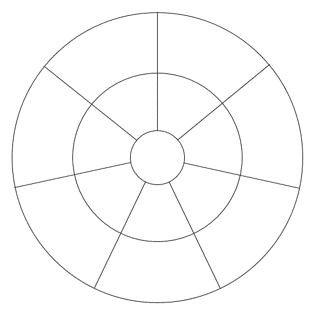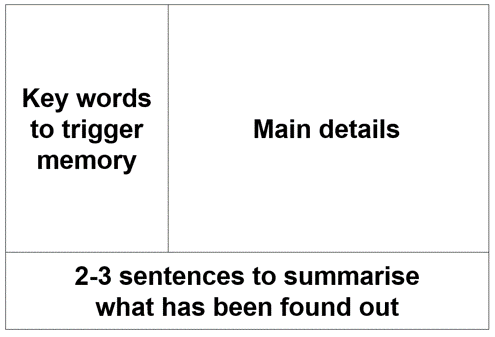Note making is a really important skill and is key to your revision in all year groups, although it can sometimes be difficult to know where to start.
The PRANK method will make it easier for you and allow you to summarise all the necessary key points in your notes.
| P | Purpose | Why are we doing this? |
| R | Read | For the gist, then specifically. |
| A | Apply | To a framework |
| N | Notes | Techniques such as abbreviations |
| K | Know It | An activity that does something with the notes |
Purpose
Think about:
- What are the key points your notes need to cover? Do they need to link to specific points on the specification?
- What are you trying to achieve by completing your notes? For example preparation for a test or assessment, a presentation or an exam question.
Read
The reading part has two sections.
1. Skim or scan read to ensure that the information you have is relevant.
Skimming is used to quickly identify the main ideas of a text. Skimming is done at a speed three to four times faster than normal reading. Use skimming when you want to see if an article may be of interest in your research.
There are many strategies that can be used when skimming. Some people read the first and last paragraphs. You might read the title, subtitles/subheadings, and study illustrations. Consider reading the first/last sentence of each paragraph.
Scanning is a search technique for keywords or ideas. In most cases, you know what you’re looking for, so you’re concentrating on finding a particular answer. Scanning involves moving your eyes quickly down the page seeking specific words and phrases.
2. Read again for depth.
It is also a good idea to read information from more than one resource.
Apply
Your notes will have more structure if you apply them to a framework, such as a circle template or a table. Think carefully about what the column headings will be and how you will ensure that the framework allows you to summarise all the information that you need to make notes on.
Click on the link below for lots of circle templates.


Notes
Note-making is exactly what it says on the tin. You should use a range of techniques to cut down on the amount you write and organise your information.
- Record the title, author and page numbers (for future reference).
- Copy quotes in full.
- Leave spaces in your notes so that new information and ideas can be added later.
- Use symbols/abbreviations to save time, for example: & + = < > info govt etc 1o
Know it (without your notes)
Complete a task that requires you to do something with the information that you have acquired through taking notes. This can be a small scale task on route to something bigger.
For example, test yourself with some exam questions or questions from a textbook to help prepare for a test or assessment, or try and write out your notes in a different format, such as a mind map.
Lesson examples of PRANK

